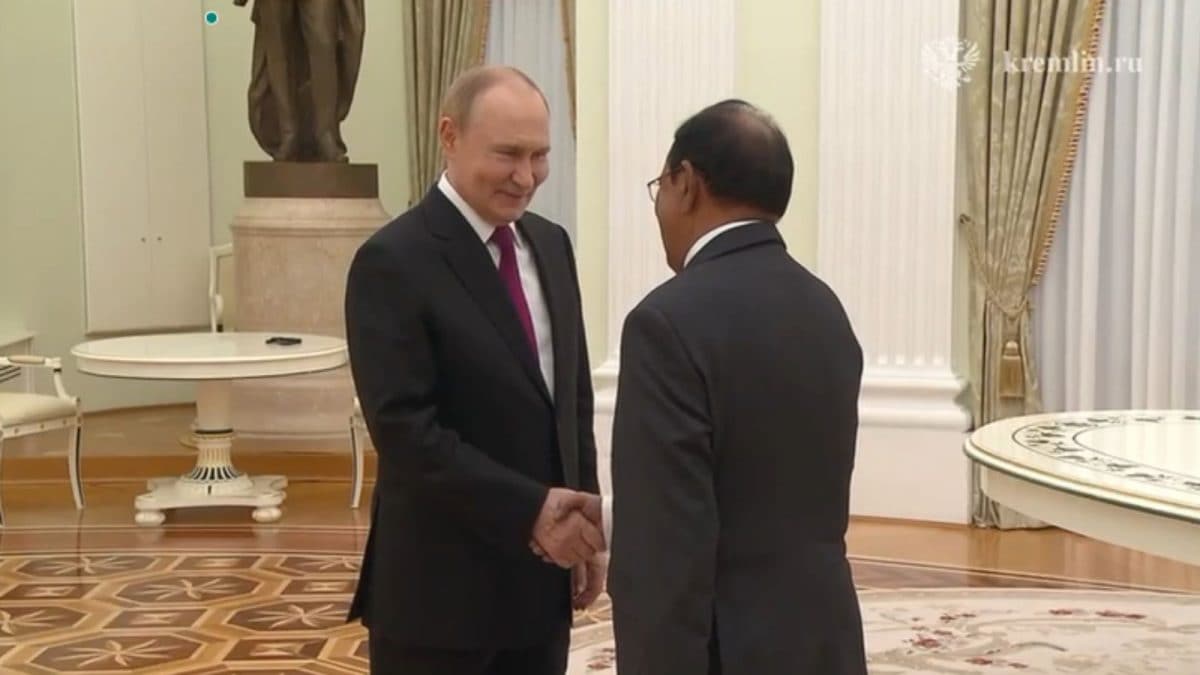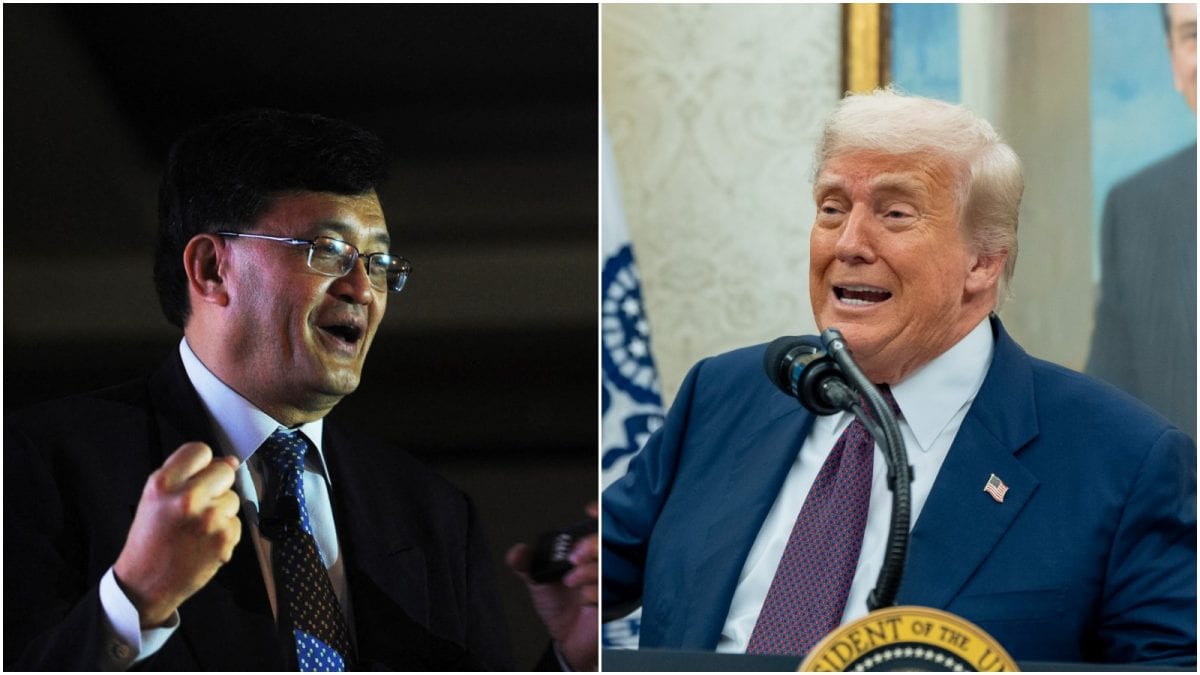Last Updated:August 07, 2025, 15:53 IST
If current trends continue, China’s population could shrink to levels last seen in the 1950s, UN projections show

For the third year in a row, China’s population is shrinking. (Image: Reuters)
For the third year in a row, China’s population is shrinking. The country recorded a drop of 1.39 million people in 2024, according to the Bureau of Statistics, bringing its total population to 1.408 billion. This follows an even steeper fall in 2023, when numbers fell by 2.08 million, marking the fastest decline in over six decades. Births are not just falling behind deaths; they’re disappearing from the national imagination.
Now, Beijing is finally making its move.
On July 28, the Chinese government announced a nationwide childcare subsidy of 3,600 yuan (£376) per year for every child under the age of three. The scheme, backdated to January 2025, will also offer partial payouts to children born between 2022 and 2024. Crucially, the subsidies will not count as taxable income or affect poverty assistance eligibility, signalling that the state wants uptake, not bureaucracy.
This is a sharp departure from past policy, where the onus of boosting fertility was left to provincial and city-level governments. In the last few years, over 20 regions have launched their own piecemeal incentives — housing discounts, monthly allowances, baby bonuses — but none have managed to reverse the trend. By stepping in directly, Beijing has signalled that it now considers the collapsing birth rate not just a demographic concern, but a national emergency.
At stake is not just the country’s economic growth, but the future of its labour force, pension systems, and healthcare infrastructure. An ageing China, shrinking at the base and ballooning at the top, risks becoming old before it becomes rich.
Why Aren’t People Having Children In China?
The numbers tell only part of the story. Underneath the decline is a deep and perhaps irreversible cultural shift.
First, marriage itself is in decline. Only 6.1 million couples registered marriages in 2024, down from 7.7 million the year before. More young Chinese are choosing to stay single, delay family formation, or reject it altogether. This is not unique to China; similar patterns are seen in South Korea, Japan, and Taiwan, but China’s size and speed of change make it particularly stark.
Second, having children has simply become unaffordable in China. A 2024 report by the YuWa Population Research Institute estimated that raising a child in urban China costs 538,000 yuan (£59,275) till the age of 18, more than 6.3 times the country’s per capita GDP. The phrase “tunjinshou", or “gold-devouring beasts", is now a popular, if grim, shorthand for children in many urban households.
Third, the workplace is often hostile to mothers. Many Chinese women report being pushed out of their jobs or passed over for promotions simply because they had children or took maternity leave. While women are legally entitled to 128 to 158 days of leave (depending on the province), fathers receive only a handful of days. Parental responsibility remains deeply gendered, and the state’s leave policies mirror that inequality.
Then there is the crushing pressure of modern parenting. High housing costs, hyper-competitive education, and a lack of affordable childcare combine to make family life feel more like a burden than a joy. These factors are especially magnified in China’s largest cities, where the cost of living has exploded but real wages and job security have stagnated.
What Has Been Tried And Why It Hasn’t Worked
For years, provincial governments have scrambled to offer incentives. In Inner Mongolia’s Hohhot, families with a second or third child are eligible for up to 100,000 yuan (£10,400), paid annually until the child turns 10. The policy also includes free milk for new mothers and a 3,000 yuan dairy product voucher.
In Tianmen, parents of a third child can claim a 12,500-pound discount on new homes. Hangzhou has distributed childcare vouchers. Cities like Shenyang and Changchun offer cash subsidies ranging from 1,800 to 3,600 yuan per child annually.
These sound generous on paper, but uptake has been low. In most cases, the incentives are dwarfed by the actual cost of parenting. As one mother from Ningxia told Xinhua, the subsidies barely cover basics like baby formula and diapers. For middle-class and working-class families, they are not gamechangers; they are a drop in the ocean.
More importantly, these schemes have failed to address structural inequities. From job insecurity and unaffordable housing to unequal leave policies and gendered expectations, the barriers are systemic. In an online poll cited by The Conversation in 2022, nearly 90 per cent of Chinese respondents said they wouldn’t consider having more children even if given 12,000 yuan annually, four times what the Chinese government is now offering.
Why This Subsidy Might Still Not Be Enough
The latest national childcare subsidy may be modest, but it’s significant. It marks the first time the Chinese government has directly deployed fiscal tools to encourage childbirth. The rollout, alongside a nationwide promise of free preschool, is designed to relieve pressure on parents in both urban and rural areas.
The policy is also cleaner in design, no application hurdles, no tax implications, and broader eligibility, aiming for scale. According to the Health Commission, nearly 20 million families could benefit.
But experts remain sceptical. Yale demographer Emma Zang told Reuters that without sustained investment in affordable childcare, job protections for women, and a more equitable parental leave framework, the effect on fertility is likely to be “minimal."
South Korea offers a cautionary tale. Despite decades of generous baby bonuses, housing perks, and leave policies, its birth rate remains the lowest in the world. Fertility decline, once entrenched, is hard to reverse. Social norms don’t snap back. They ossify.
A Cultural Reckoning Ahead?
If China hopes to slow, let alone reverse, its population drop, it will need more than cash. It will need a cultural reckoning.
That means undoing decades of gender inequality in both the home and workplace. It means making parenting, for both mothers and fathers, economically viable and socially supported. And it means acknowledging that the one-child policy didn’t just shrink family sizes, it rewired an entire generation’s expectations about what family even means.
The urgency is real. The United Nations projects China could lose 204 million people between 2024 and 2054, and as many as 786 million by the end of the century, returning to population levels not seen since the 1950s.
Whether these new policies are a turning point or a last-ditch effort remains to be seen.

Karishma Jain, Chief Sub Editor at News18.com, writes and edits opinion pieces on a variety of subjects, including Indian politics and policy, culture and the arts, technology and social change. Follow her @kar...Read More
Karishma Jain, Chief Sub Editor at News18.com, writes and edits opinion pieces on a variety of subjects, including Indian politics and policy, culture and the arts, technology and social change. Follow her @kar...
Read More
August 07, 2025, 15:50 IST
News explainers China’s Birth Rate Is Plummeting: Can Cash Subsidies Reverse A Deepening Demographic Crisis?
Disclaimer: Comments reflect users’ views, not News18’s. Please keep discussions respectful and constructive. Abusive, defamatory, or illegal comments will be removed. News18 may disable any comment at its discretion. By posting, you agree to our Terms of Use and Privacy Policy.
Read More

 6 hours ago
6 hours ago















